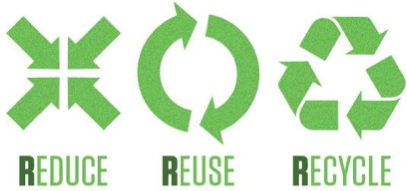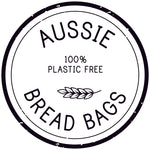It’s a very busy time of year at the moment. Whoever named this end of year season a ‘holiday’ obviously did not have children!
Once you have survived the craziness of Christmas, and then revelry of new year’s eve, back to school and it’s very necessary preparation is hiding just around the corner to greet you!
There are school bags, lunch boxes, stationery items, uniforms, shoes, hats, electronics and books to buy; the list seems to be never ending!
So how can you do back to school in the most sustainable and environmentally friendly way? Read on for our top tips…
The Three Rs
No, we don’t mean the academic ones; we mean the sustainable three Rs:

Source: urbanimpact.com
Reuse
To start with, we all know just how fast kids grow, so why not reuse as many uniforms as possible? Many school uniform shops offer both new and second-hand uniforms, hats (washed well, thankfully) and school bags for sale. Buying good quality second hand can mean you are paying less, while you are saving the environment at the same time.
Many schools or communities also have swap days or social platforms that can link you with other families who may have reusable items available for swap or sometimes just to give away.
You might score some pre-loved text books also!

Source: shutterstock
Recycle
Stationery can be a killer. All that paper in note pads and books, plastic in erasers, rulers and pens, and of course the pencil cases that get destroyed and need replacing at least twice a term.
How can you make your stationery purchases more sustainable? Buy products made from natural, renewable or recycled materials.
Recycled note pads and books are generally available anywhere and are just as easy to locate as non-recycled products, at the same price many times.
Check that your pens and pencils are made from either recycled or environmentally friendly and non-toxic materials.
Buy fabric pencil cases rather than plastic, they have some great, junky patterns, are washable and often a lot more durable than their plastic counterparts.

Source: shutterstock
Reduce
Lunch boxes can be the trickiest things in your sustainability efforts. They are often filled with plastic pre-packaged foods and snacks that take a very heavy toll on the environment.
Our tips in this space are to try recyclable containers where possible; buy a quality set of containers and wash and reuse.
Buying snacks in bulk, rather than individually pre-portioned packages. This will not only save some extra packaging from landfill, it can be easier on your wallet also.
Try linen or cotton bags to divide snacks between (Aussie Bread Bags have a range of sizes available). They keep baked items and sandwiches fresh and fruit and snacks contained. Cotton or linen bags are light in weight and best of all, they are washable and reusable for the entire year, if not beyond.

Source: shutterstock
It All Starts At Home
Good, sustainable habits always start at home, so while you are in the sustainable mindset, why not restock your linen bread bags from Aussie Bread Bags for the new school year. They are available in a range of sizes and brilliant for keeping all your sandwich bread fresher for longer, without the environmental toll.
